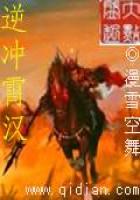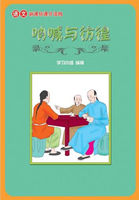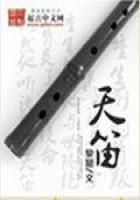Let us open a Chalicodoma grub under the microscope, during the period of torpor. Its contents consists almost entirely of a liquid broth, in which swim numberless oily globules and a fine dust of uric acid, a sort of off-throw of the oxidized tissues. Aflowing thing, shapeless and nameless, is all that the animal is, if we add abundant ramified air ducts, some nervous filaments and, under the skin, a thin layer of muscular fibers. A condition of this kind accounts for a fatty transpiration through the skin when the Anthrax' sucker is at work. At any other time, when the larva is in the active period or else when the insect has reached the perfect stage, the firmness of the tissues would resist the transfusion and the suckling of the Anthrax would become a difficult matter, or even impossible. In point of fact, I find the grub of the fly established, in the vast majority of cases, on the sleeping larva and sometimes, but rarely, on the pupa. Never do I see it on the vigorous larva eating its honey; and hardly ever on the insect brought to perfection, as we find it enclosed in its cell all through the autumn and winter. And we can say the same of the other grub eaters that drain their victims without wounding them: all are engaged in their death dealing work during the period of torpor, when the tissues are fluidified. They empty their patient, who has become a bag of running grease with a diffused life; but not one, among those I know, reaches the Anthrax' perfection in the art of extraction.
Nor can any be compared with the Anthrax as regards the means brought into play in order to leave the cell. These others, when they become perfect insects, have implements for sapping and demolishing, stout mandibles, capable of digging the ground, of pulling down clay partition walls and even of reducing the mason bee's tough cement to powder. The Anthrax, in her final form, has nothing like this. Her mouth is a short, soft proboscis, good at most for soberly licking the sugary exudations of the flowers; her slim legs are so feeble that to move a grain of sand were an excessive task for them, enough to strain every joint; her great, stiff wings, which must remain full spread, do not allow her to slip through a narrow passage; her delicate suit of downy velvet, from which you take the bloom by merely breathing on it, could not withstand the rough contact of the gallery of a mine. Unable herself to enter the Mason bee's cell to lay her egg, she cannot leave it either, when the time comes to free herself and appear in broad daylight in her wedding dress. The larva, on its side, is powerless to prepare the way for the coming flight. That buttery little cylinder, owning no tools but a sucker so flimsy that it barely arrives at substance and so small that it is almost a geometrical point, is even weaker than the adult insect, which at least flies and walks. The Mason bee's cell represents to it a granite cave. How to get out? The problem would be insoluble to those two incapables, if nothing else played its part.
Among insects, the nymph, or pupa, the transition stage between the larval and the adult form, is generally a striking picture of every weakness of a budding organism. A sort of mummy tight bound in swaddling clothes, motionless and impassive, it awaits the resurrection. Its tender tissues flow in every direction; its limbs, transparent as crystal, are held fixed in their place, along the side, lest a movement should disturb the exquisite delicacy of the work in course of accomplishment. Even so, to secure his recovery, is a broken boned patient held captive in the surgeon's bandages. Absolute stillness is necessary in both cases, lest they be crippled or even die.
Well, here, by a strange inversion that confuses all our views on life, a Cyclopean task is laid upon the nymph of the Anthrax. It is the nymph that has to toil, to strive, to exhaust itself in efforts to burst the wall and open the way out. To the embryo falls the desperate duty, which shows no mercy to the nascent flesh; to the adult insect the joy of resting in the sun. This transposition of functions has as its result a well sinker's equipment in the nymph, an eccentric, complicated equipment which nothing suggested in the larva and which nothing recalls in the perfect insect. The set of tools includes an assortment of plowshares, gimlets, hooks and spears and of other implements that are not found in our trades nor named in our dictionaries. Let us do our best to describe the strange piercing gear.
In a fortnight at most, the Anthrax has consumed the Chalicodoma grub, whereof naught remains but the skin, gathered into a white granule. By the time that July is nearly over, it becomes rare to find any nurslings left upon their nurses. From this period until the following May, nothing fresh happens. The Anthrax retains its larval shape without any appreciable change and lies motionless in the mason bee's cocoon, beside the pellet remains. When the fine days of May arrive, the grub shrivels and casts its skin and the nymph appears, fully clad in a stout, reddish, horny hide.
The head is round and large, separated from the thorax by a strangulated furrow, crowned on top and in front with a sort of diadem of six hard, sharp, black spikes, arranged in a semicircle whose concave side faces downward. These spikes decrease slightly in length from the summit to the ends of the arch. Taken together, they suggest the radial crowns which we see the Roman emperors of the Decadence wear on the medals. This six-fold plowshare is the chief excavating tool. Lower down, on the median line, the instrument is finished off with a separate group of two small black spikes, placed close together.














